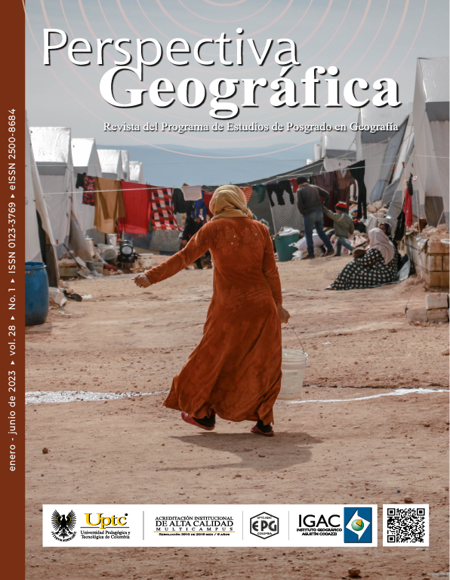Vulnerability to risks and social actors: Reciprocal configuration? Case study in Ciudad Juárez, Chihuahua, Mexico

Abstract
Vulnerability to risks originating in the biophysical medium is not exclusively natural, and its analysis does not include natural scientists only. Economic and social dimensions intertwine in its origin and impact, where considering the role of the inhabitants of the areas at risk and the social actors involved in risk prevention management and attention to vulnerability is relevant. The aim of this work is to analyze the subjective aspect of the vulnerability to risks, that is, on an individual level, and understand how the individual participates in the vulnerability. The theoretical references are the complex systems and the integral approach. However, this work presents only the subjective subsystem due to space constraints. Regarding the methodology, a survey was administered to the inhabitants of an area with a high-risk level of flooding and erosion, and in-depth interviews were carried out with risk managers. The dimension of the individual or actor of vulnerability to risks originating in the biophysical medium is integrated by the cognitive, emotional, and behavioral components of the social actors. These components integrate the risk signification, and the research results show that it affects the vulnerability and simultaneously participates in the construction of the risk signification in a reciprocal configuration cycle.
Keywords
Vulnerability, risks, significance
Author Biography
Maria de Lourdes Romo Aguilar
Profesora e investigadora, El Colegio de la Frontera Norte (El Colef).
References
- Amezcua, M. (2010). Negociando los significados del riesgo. Seguridad compartida en el entorno asistencial. Revista ROL de enfermería, 33(7-8), 496-503. https://pesquisa.bvsalud.org/portal/resource/pt/ibc-80551
- Gobierno Municipal de Juárez & Instituto Municipal de Investigación y Planeación (IMIP). (1996). Atlas de riesgos naturales y atlas de riesgos antropogénicos. IMIP.
- Lynch, K. (1976). La imagen de la ciudad. Ediciones Infinito.
- Macías, J. M. (2001). Reubicación de comunidades humanas. Universidad de Colima.
- Monnet, J. (1995). Usos e imágenes del centro histórico de la Ciudad de México. Centro de Estudios Mexicanos y Centroamericanos.
- Pírez, P. (1995). Actores sociales y gestión de la ciudad. Ciudades, 28, 8-14.
- Quiroz Palacios, A. (2004). Actitudes y representaciones: temas actuales de psicología social. Benemérita Universidad Autónoma de Puebla.
- Ritzer, G. (2002). Teoría sociológica moderna. (5ª ed.). McGraw Hill Interamericana.
- Romo Aguilar, M. de L. (2006). Vulnerabilidad a riesgos físicos. Poniente de Ciudad Juárez, Chihuahua. [Tesis de doctorado en Ciencias Sociales]. División de Ciencias Sociales y Humanidades, Universidad Autónoma Metropolitana, Unidad Xochimilco.
- Romo Aguilar, M. de L. (2019). Vulnerabilidad a eventos hidrometeorológicos y el cambio climático, propuesta conceptual y metodológica para el desarrollo sostenible. En César Fuentes Flores (coordinador), Desarrollo sostenible en la frontera norte de México: reflexiones para una agenda de acción (pp. 235-261). El Colef.
- Sánchez Martínez, Y. (2012). El tema de la significación desde la construcción teórica. Una visión sociocultural de la significación. Contribuciones a las Ciencias Sociales, 16. https://www.eumed.net/rev/cccss/20/ysm.html
